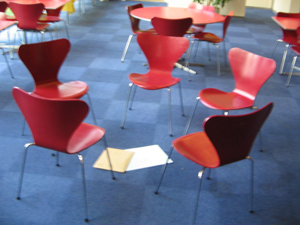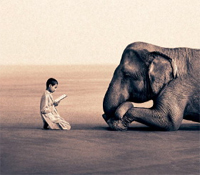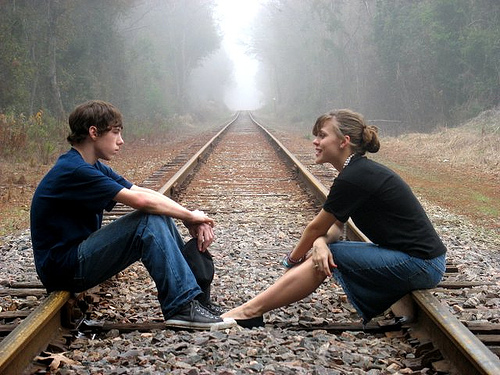Pioneers of Change have produced a research study profiling dialogue tools and processes for social change.
The context of the project may sound very specific, but the outcome is a brilliant resource for any person facilitating processes of exchange, dialogue and discussion anywhere in the world!
The study was commissioned by the German Technical Cooperation Organisation (GTZ) in support to the HIV/AIDS Programme of the Nelson Mandela Foundation.
You may wonder what the work of Mandela’s foundation against AIDS has to do with dialogue. Well, promoting dialogue has been and remains one of the prime goals of the foundation’s HIV programme.
“Maintaining public interest in HIV and AIDS has proven to be a key to beginning to challenge individuals and organisations on an increasing and significant scale to help those who are affected and infected.”
Brilliant.
It is in the framework of this thinking that an excellent toolkit on dialogue was produced which introduces itself by quoting the author of Sophie’s World and Norwegian intellectual, Jostein Gaarder:
“An answer is always the part of the road that is behind you. Only questions point to the future.”
All excellent.
The introduction continues to set the ground for the publication by observing that our modern world loves answers and quick solutions to problems, which we love to pass on to others through writing, teaching and lecturing. The authors continue to state, and I could not agree more, that this approach — while being useful in some situations — is problematic when addressing the challenges of our time – social and human, economic and political.
Why is that so?
Pioneers of Change and the GTZ have two reasons to give to the answer-craving audience:
complexity….
Firstly, we live in a world of increasing complexity, where answers have a short life-span and problems are characterised by three types of complexity: dynamic complexity, social complexity and generative complexity.
responses.
Secondly, people seem to have an inherent desire to solve their own problems, which is why universal, formulaic responses imposed from the outside often fail — producing even more simplistic “solutions”.
So, dialogue is the ultimate solution then?!
Well, not so quickly! Let’s have a closer look at the two reasons and see where this takes us.
The idea of threefold complexity stems from Adam Kahane and his book «Solving tough problems: An Open Way of Talking, Listening, and Creating New Realities» about which Nelson Mandela said:
“This breakthrough book addresses the central challenge of our time: finding a way to work together to solve the problems we have created.”
In his book Kahane typifies complexity and in doing so differentiates between
social.
generative.
leading to
systemic.
participatory.
creative.
- dynamic complexity, meaning that cause and effect are distant in space and time and suggesting that a systemic approach is needed to address this type of complexity and underlying problems,
- social complexity, meaning that there is no singular truth or ownership of an issue but rather many different and usually conflicting opinions and assumptions about the problem in question, suggesting that a participative approach is required to deal with this kind of complexity,
- generative complexity, meaning the problematic situation is constantly and unpredictably changing and therefore old solutions to previous problems are not working any longer, suggesting that a creative approach is necessary to cope with this form of complexity.
In other words, Kahane claims that today’s problems can only be solved by processes which are holistic, democratic and imaginative.
And how could you better combine these approaches than through shared experience and exchange? How could you better stimulate new ideas and utilise the wisdom of crowds than through genuine dialogue?
than most!
So here it is then, the spirit in which this handbook critically explores different tools and methods to engage in processes of authentic dialogue. Excitingly, the authors have not just described a couple of tools. They have done much more in looking at the stories behind the approaches and asking where they come from to put each approach into a context.
It is because of this contextualisation and historicisation that the book can also provide unique space for constructive and critical reflection by showing limits or pointing out weaknesses of the approaches described. At the same time, the publication gives hints on how to creatively combine different methods and strategies to best respond to the situation at hand.

Let me give you an example to illustrate the publication’s approach and my point. You all know very well the circle as a method of engaging in dialogue with groups of up to 30 people or so. Well, the book has something important to say on the circle:
“For many who are not used to the circle, the slowness of the conversation and thinking can be frustrating… It’s worth noting that social science research has actually been done to show that the first person to speak can have a large influence on what is said and the direction the conversation takes. The circle seems particularly prone to this dynamic. This can be useful, but it can also be problematic.”
To cut a long story short: In doing these things it is so much better than most toolboxes out there. Actually, by doing these things it is much better than most toolboxes out there.
So what exactly are you waiting for?
Right click, save as, print and read!
And obviously: try out and explore in practice, and if you have something to say
please do give feedback to the authors – it will surely be appreciated…
∞




Comments
One response to “Mapping dialogue”
C is for conversation, curiosity, caring, community
Yes, yes, yes.